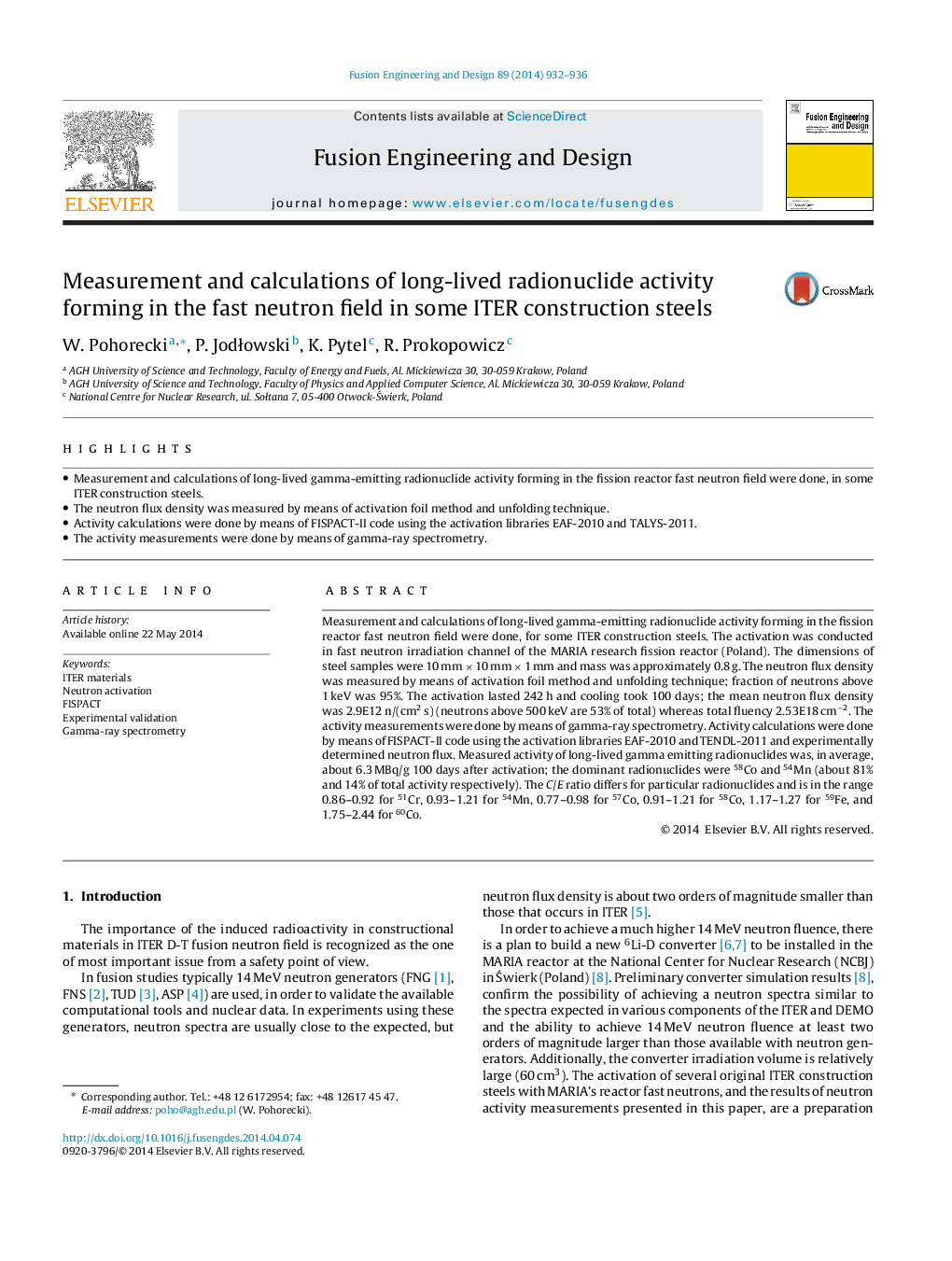| Article ID | Journal | Published Year | Pages | File Type |
|---|---|---|---|---|
| 271156 | Fusion Engineering and Design | 2014 | 5 Pages |
•Measurement and calculations of long-lived gamma-emitting radionuclide activity forming in the fission reactor fast neutron field were done, in some ITER construction steels.•The neutron flux density was measured by means of activation foil method and unfolding technique.•Activity calculations were done by means of FISPACT-II code using the activation libraries EAF-2010 and TALYS-2011.•The activity measurements were done by means of gamma-ray spectrometry.
Measurement and calculations of long-lived gamma-emitting radionuclide activity forming in the fission reactor fast neutron field were done, for some ITER construction steels. The activation was conducted in fast neutron irradiation channel of the MARIA research fission reactor (Poland). The dimensions of steel samples were 10 mm × 10 mm × 1 mm and mass was approximately 0.8 g. The neutron flux density was measured by means of activation foil method and unfolding technique; fraction of neutrons above 1 keV was 95%. The activation lasted 242 h and cooling took 100 days; the mean neutron flux density was 2.9E12 n/(cm2 s) (neutrons above 500 keV are 53% of total) whereas total fluency 2.53E18 cm−2. The activity measurements were done by means of gamma-ray spectrometry. Activity calculations were done by means of FISPACT-II code using the activation libraries EAF-2010 and TENDL-2011 and experimentally determined neutron flux. Measured activity of long-lived gamma emitting radionuclides was, in average, about 6.3 MBq/g 100 days after activation; the dominant radionuclides were 58Co and 54Mn (about 81% and 14% of total activity respectively). The C/E ratio differs for particular radionuclides and is in the range 0.86–0.92 for 51Cr, 0.93–1.21 for 54Mn, 0.77–0.98 for 57Co, 0.91–1.21 for 58Co, 1.17–1.27 for 59Fe, and 1.75–2.44 for 60Co.
